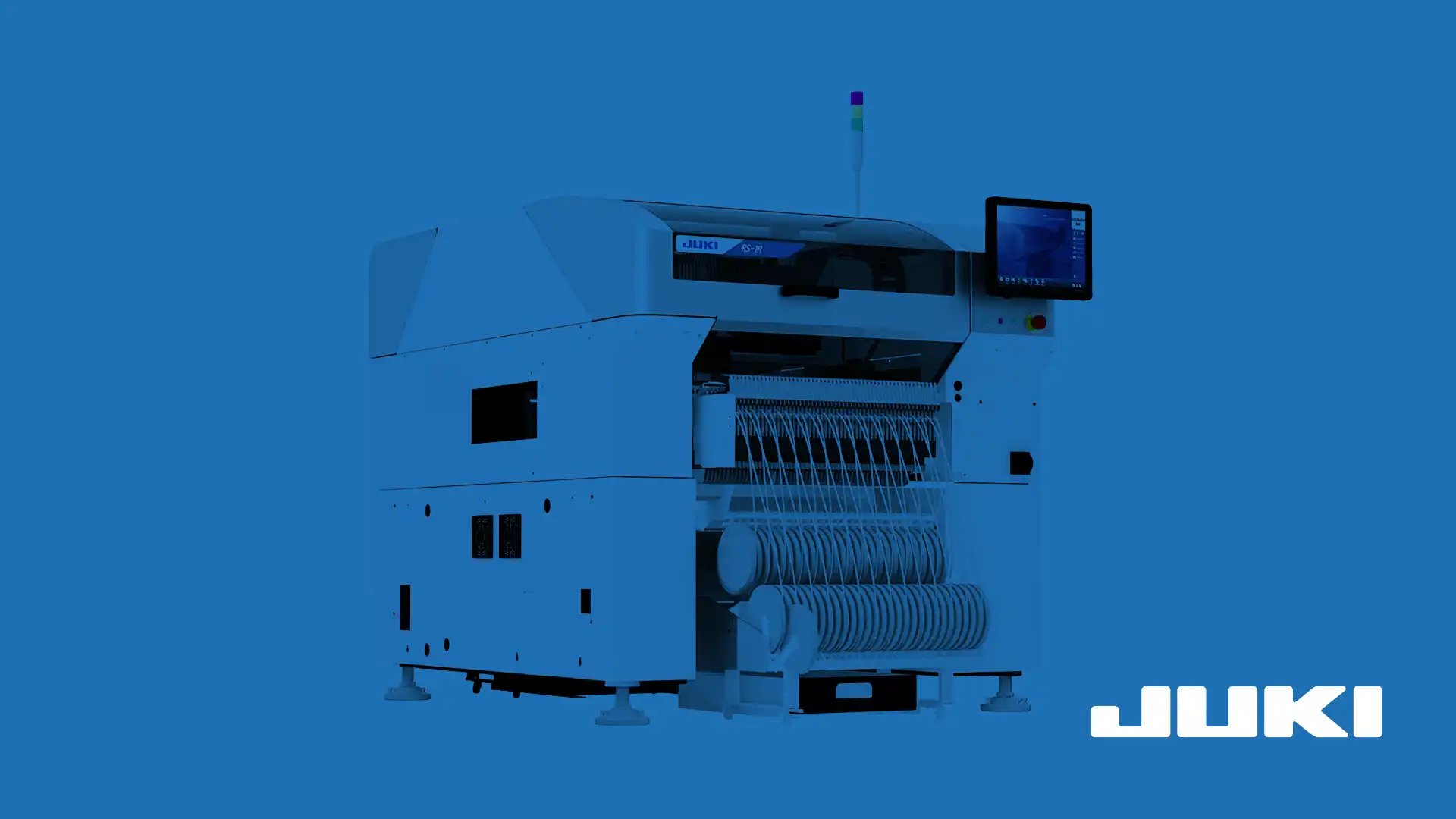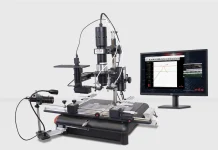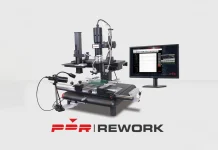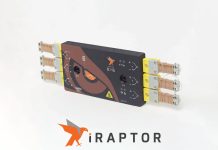Why Pick & Place Systems Are Revolutionising Electronics Manufacturing in 2025
What Are Pick & Place Systems in Electronics Manufacturing?
Pick & Place Systems in electronics manufacturing are robotic machines designed to accurately position electronic components—such as resistors, capacitors, and integrated circuits (ICs)—onto printed circuit boards (PCBs). These systems form the backbone of Surface Mount Technology (SMT) production lines.
In an industry where components are often just millimetres or even microns in size, precision is paramount. Pick & Place Systems enable the rapid and reliable population of boards with thousands of tiny parts at speeds and accuracy levels no human could match.
These systems support high-volume and high-mix environments, making them indispensable for everything from smartphones and laptops to medical devices and aerospace electronics.
Evolution of Automation in Electronics Production
The early days of electronics assembly relied heavily on manual soldering and component placement, which was slow, error-prone, and difficult to scale.
By the 1980s, SMT began replacing through-hole technology, creating a need for more automated solutions. The introduction of the first-generation pick & place machines revolutionised production lines by combining speed with positional accuracy.
Today’s systems are light-years ahead—leveraging AI-driven vision systems, self-calibration, and real-time data exchange with factory software for unparalleled consistency and efficiency.
Core Components of an Electronics Pick & Place System
A modern system includes the following vital components:
- Component Feeders: Present components in tape, tray, or tube form.
- Gantry or Turret Robots: Enable X-Y-Z movement across the PCB with sub-millimetre precision.
- Vision Systems: Inspect and align components using machine learning algorithms.
- Nozzles & Heads: Use suction or mechanical gripping to pick up tiny parts.
- Conveyor and PCB Clamping: Secure the board for accurate placement.
Each part works in harmony to ensure that every chip, diode, and connector is placed in its exact intended location.
How These Systems Work in PCB Assembly
Here’s a simplified view of the process within a typical SMT line:
- Feeder Presentation: Components are loaded into feeders that advance them for picking.
- Component Pickup: A robotic head with vacuum nozzles retrieves the components.
- Vision Inspection: The camera system checks orientation and positioning.
- Board Alignment: The PCB is held in place while placement coordinates are verified.
- Placement: Each component is placed onto the solder-pasted pads of the PCB.
- Reflow Soldering: Post-placement, the board is heated in a reflow oven to secure components.
Modern machines can place tens of thousands of components per hour (CPH) with placement accuracies often within ±30 microns.
Specialised Types for Electronics Manufacturing
Electronics assembly demands specific system configurations:
- High-Speed Chip Shooters: Designed to rapidly place small passive components like resistors and capacitors.
- Flexible Mounters: Handle odd-shaped or large components with care.
- Multifunctional Placement Machines: Combine speed with flexibility for medium-volume runs.
- Inline and Standalone Systems: Offer scalability for both SMEs and global manufacturers.
The right choice depends on the nature of your product, whether it’s high-mix-low-volume (HMLV) or high-volume-low-mix (HVLM).
Key Benefits in the Electronics Sector
Ultra-High Precision Handling
These systems handle 0201 metric components (0.25mm x 0.125mm) and smaller with absolute precision—an essential feature as PCBs shrink in size but grow in complexity.
Enhanced Throughput and Line Balancing
They increase production efficiency by balancing workloads across multiple heads and feeders. This leads to faster changeovers and optimised run times.
Cost-Effective Scalability
As demand increases, lines can be upgraded or duplicated, ensuring cost-effective scaling without sacrificing quality.
Common Applications in Electronics
Pick & Place Systems are central to nearly every aspect of modern electronics production. Here’s a closer look at the most prominent applications:
Surface Mount Technology (SMT) Lines
SMT lines are the beating heart of electronics assembly. Pick & Place Systems are responsible for positioning surface mount devices (SMDs) onto PCBs with extreme precision. Whether it’s a smartphone motherboard or a car’s ECU (Electronic Control Unit), SMT pick & place robots are essential for:
- Passive component placement (resistors, capacitors)
- IC installation (microcontrollers, processors)
- BGA and QFN component alignment
These machines operate seamlessly with solder paste printers and reflow ovens to deliver high-throughput, ultra-reliable circuit boards.
Flexible Hybrid Electronics (FHE)
In applications like wearable tech and medical patches, FHE combines flexible substrates with traditional rigid components. Pick & Place Systems adapted for FHE can:
- Place components on roll-to-roll substrates
- Handle bendable materials without causing damage
- Maintain alignment under dynamic stresses
This enables the creation of next-generation electronics that are lightweight, conformal, and versatile.
LED and Display Assembly
Displays and LEDs are delicate, often requiring careful handling and alignment. Modern pick & place machines are equipped with:
- Vision-guided placement for pixel accuracy
- Soft-contact grippers to avoid damage
- Custom heads for placing thin-film transistors and backlight modules
Such precision ensures quality in televisions, smartphones, automotive displays, and more.
Integration with MES and ERP Systems
Pick & Place Systems don’t work in isolation. They’re increasingly integrated into a factory’s digital ecosystem via:
- Manufacturing Execution Systems (MES): For production tracking, part traceability, and real-time alerts.
- Enterprise Resource Planning (ERP): For inventory control, scheduling, and demand forecasting.
These integrations allow factories to:
- Respond quickly to errors or deviations
- Maintain traceable records for regulatory compliance (especially in medical and aerospace)
- Improve first-pass yield and reduce downtime
Popular Software and Control Interfaces
Modern electronics manufacturers demand agile, easy-to-use software interfaces:
- CAD Import & Mapping: Import PCB design files to guide part placement.
- Auto-Optimisation Algorithms: Calculate the most efficient placement sequence.
- Real-Time Error Feedback: Systems stop when misalignment or missing components are detected.
- Remote Monitoring Dashboards: Allow supervisors to oversee multiple machines simultaneously.
Leading pick & place vendors often provide open API support, enabling custom solutions and smoother integration with upstream/downstream processes.
Challenges Unique to Electronics Manufacturing
While highly effective, pick & place automation in electronics does come with niche challenges:
- Component Miniaturisation: The trend towards smaller devices increases placement difficulty.
- High Mix-Low Volume Runs: Custom boards and prototypes require rapid changeovers and flexible feeders.
- Electrostatic Discharge (ESD): Sensitive components must be protected with antistatic tools and protocols.
- Feeder Jam & Misfeeds: Especially in high-speed setups, a single jam can cause delays across the line.
Addressing these challenges requires careful planning, frequent maintenance, and operator training.
Maintenance for High-Precision Environments
To preserve accuracy and avoid costly downtime, maintenance must be rigorous and routine:
- Daily nozzle cleaning using isopropyl alcohol or ultrasonic baths
- Feeder calibration to ensure correct advancement
- Vision system alignment checks to avoid placement offsets
- Firmware and software updates to improve performance
A clean, static-free environment with strict temperature and humidity control further enhances system longevity.
Selecting the Right System for Your Facility
Choosing the ideal Pick & Place System involves weighing:
| Factor | Consideration |
|---|
| Board Size | Large PCBs require extended X-Y travel |
| Component Range | Fine-pitch ICs vs. large connectors |
| Placement Speed | Throughput needed for customer deadlines |
| Feeder Configuration | Tape, tray, or bulk feeders |
| Flexibility vs. Specialisation | Single vs. dual-gantry or turret heads |
| Budget | Initial investment and future scalability |
Customisation options such as smart feeders, multi-camera vision, and hot-swappable heads can further align the system with your unique production goals.
Innovations and Future Trends in Electronics Assembly
Electronics manufacturing is advancing rapidly. Here are emerging trends shaping the next generation of pick & place systems:
- AI-Powered Defect Recognition: Catching misplacements, bent leads, or missing parts in real time.
- Digital Twin Technology: Simulates real-world assembly in a virtual environment.
- Self-Learning Placement Algorithms: Improve cycle times and reduce component stress over time.
- Edge AI Computing: Processes data directly on the machine for ultra-fast reaction times.
- Modular Robotics: Expand or reconfigure systems as product lines evolve.
As consumer demands and tech complexity grow, so too must the intelligence and adaptability of these systems.
Frequently Asked Questions
1. What is the typical speed of a Pick & Place machine in electronics manufacturing?
Speeds vary, but high-end systems can place up to 120,000 components per hour. Actual throughput depends on component type, PCB complexity, and machine configuration.
2. Can one system handle all component sizes?
Modern machines come with multiple placement heads or interchangeable nozzles, allowing them to handle anything from 01005 resistors to large IC packages.
3. How do these systems ensure quality and accuracy?
Most systems are equipped with vision alignment, auto-correction features, and real-time error checking to ensure perfect placement.
4. Is it possible to integrate Pick & Place Systems with existing production lines?
Yes. Most systems are modular and can integrate with existing SMT lines, conveyor systems, and software environments such as MES and ERP.
5. What kind of training is needed to operate these systems?
Operators typically require training in feeder setup, software use, and basic troubleshooting. Many interfaces are user-friendly and support drag-and-drop programming.
6. Are Pick & Place Systems suitable for prototyping?
Yes. Many systems offer quick-change feeder bays and software import from CAD, making them ideal for low-volume, high-mix environments like prototyping labs.










